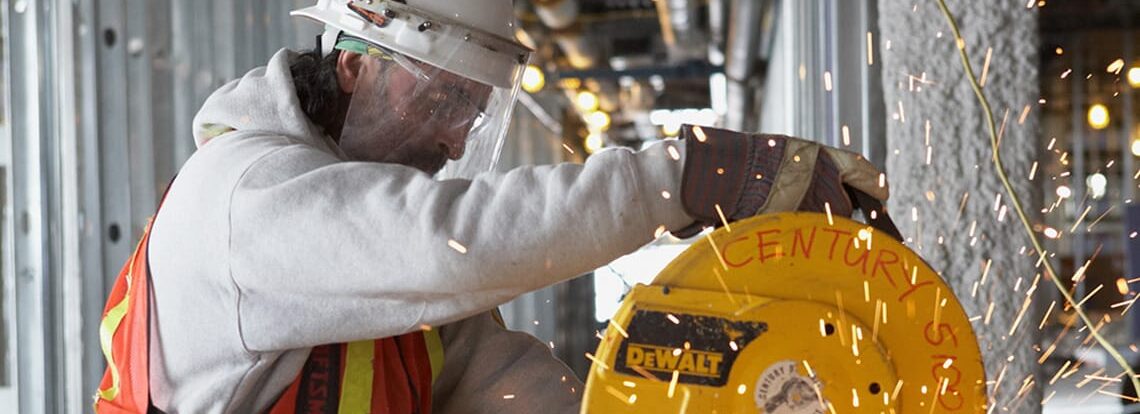According to the Centers for Disease Control and Prevention, each day about 2,000 U.S. workers sustain a job-related eye injury that requires medical treatment. About one third of the injuries are treated in hospital emergency departments, and more than 100 of these injuries result in one or more days away from work. In the construction and other high risk industries it is even higher.
However, 90% of on-the-job eye injuries could be prevented if workers wore protection. This is true whether you are in the field, office or even your own yard.
Job Site
 What excuse have you used (or heard others using) for not wearing eye protection? They are not comfortable; they are dirty; they fogged up, you were going to be doing a hazardous task for just a few seconds and did not want to stop and put them on…
What excuse have you used (or heard others using) for not wearing eye protection? They are not comfortable; they are dirty; they fogged up, you were going to be doing a hazardous task for just a few seconds and did not want to stop and put them on…
While you may think some or all of these excuses sound like good reasons for not wearing your safety glasses or goggles at work, consider what could happen if an accident occurred and injured one or both of your eyes.
Is it worth risking injury, or even blindness, for any one of those reasons? Absolutely not!
Gilbane requires anyone on our worksites to wear safety glasses as part of personal protective equipment (PPE) to protect against chemical, environmental, or mechanical irritants and hazards. Some employers, such as Gilbane, offer 100% coverage on prescription safety glasses for eligible positions through VSP or other vision providers.
Eye injuries don’t need to take place in construction work. Take a moment to think about the everyday hazards you face. Flying particles are common; from sawing, drilling, chipping, blasting, even blowing dirt and dust. Chemical and concrete splashes are other dangers. If you don’t wear eye protection when working, you are asking for trouble, and perhaps a trip to the emergency room.
Home
As we head into the Spring season many will be cleaning up the yard and outside in the sun until later in the afternoon. Help protect your eyes by checking your yard and remove debris before mowing; wear safety glasses with side shields or goggles and be sure bystanders also have eye protection when tools are in use.
Office
Eye strain can easily occur due to prolonged computer or laptop use. This can sneak up on you when working on your computer eight hours a day. If you experience eye strain/soreness, dryness, itchiness, or blurred vision, it’s important that you take a break from your computer. Also, by following the tips below you can reduce your chances of developing eye strain. The American Optometric Association (AOA) encourages all technology users to follow these recommendations:
- Follow the 20-20-20 rule. At least every 20 minutes, take a 20- second break and look at something 20 feet away.
- Increase font size instead of bringing the screen closer to your eyes.
- Reduce glare. Try to make sure lighting is not directly behind the head or in front of the screen
Remember, your eyes are valuable. It’s important to take good care of them! #GilbaneCares
Look forward to more construction safety tips during Construction Safety Week, May 6-10, 2019.

